Explore Kerala's Vibrant Traditions
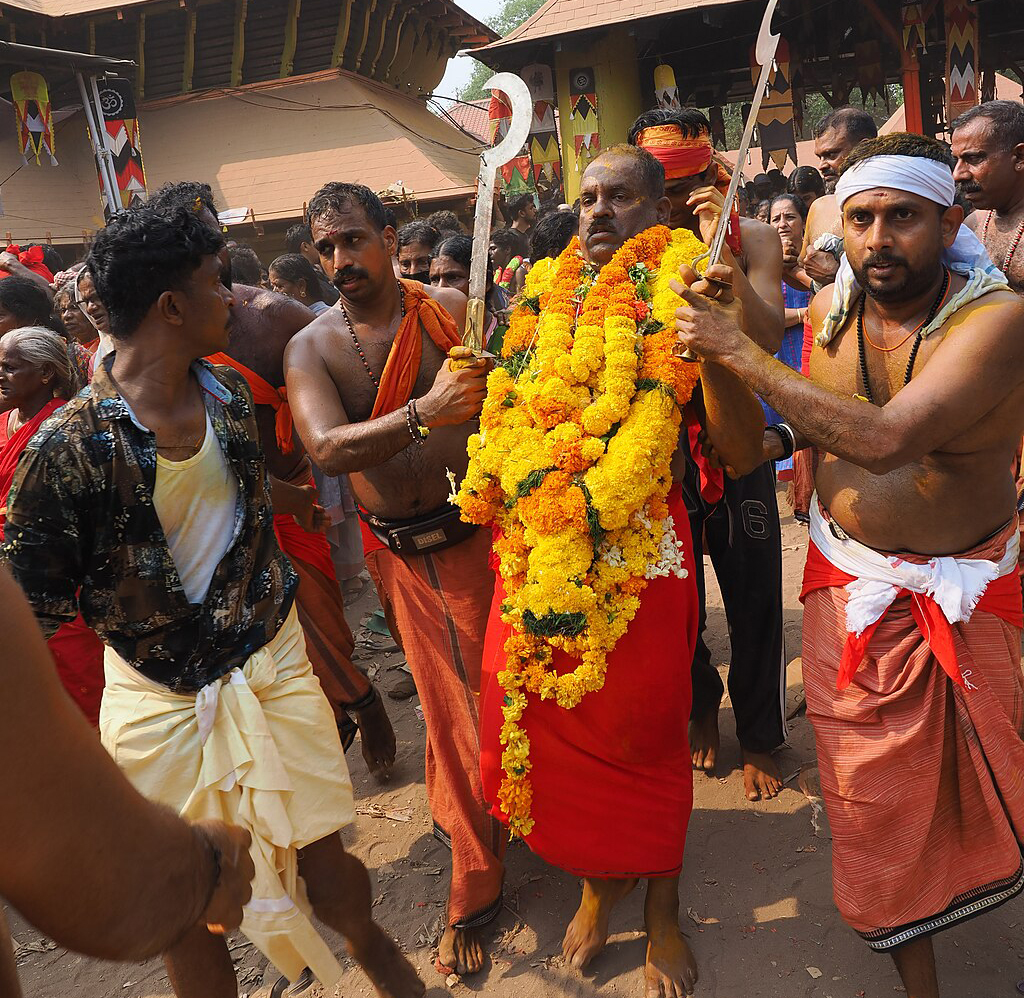
Festivals of Kerala
Kerala's festivals are the pulsating heart of its cultural identity, a vibrant tapestry of celebrations that reflect its rich history and diverse faiths. They stand as a testament to the state's inclusive spirit, where all communities come together to celebrate shared traditions and a collective identity.
Learn More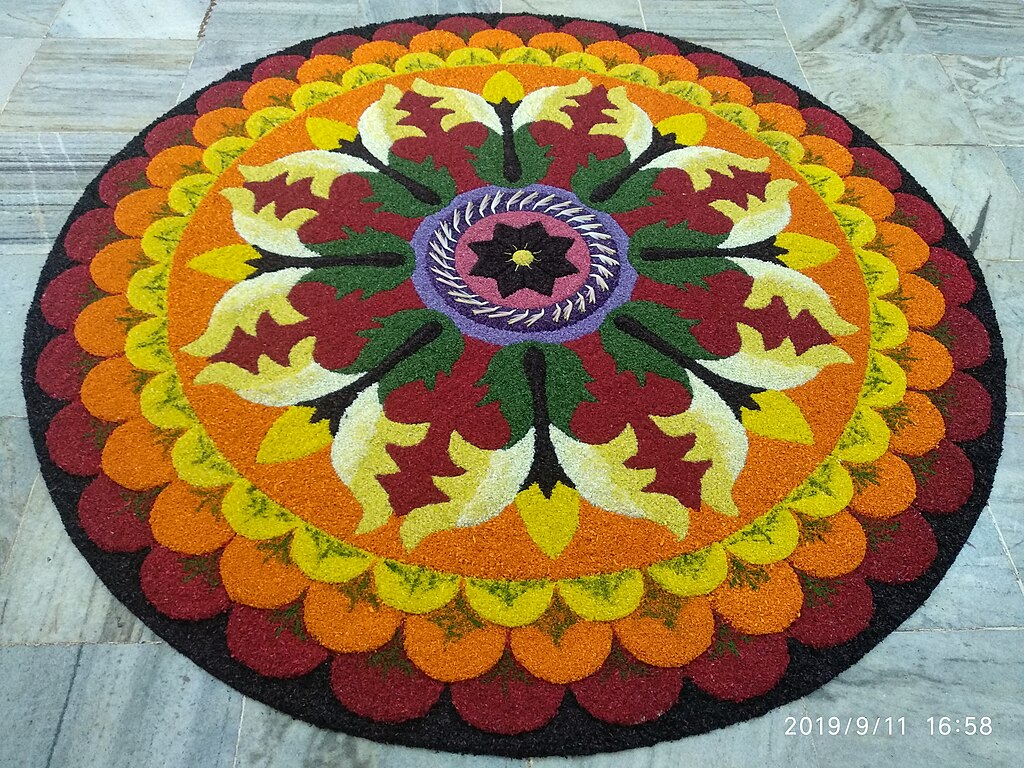
Onam: The Harvest Festival
Onam is Kerala’s harvest festival, rooted in agrarian traditions and the legendary return of King Mahabali. It features floral designs (Pookkalam), traditional feasts (Onasadya), and folk games that strengthen social bonds across communities.
Learn More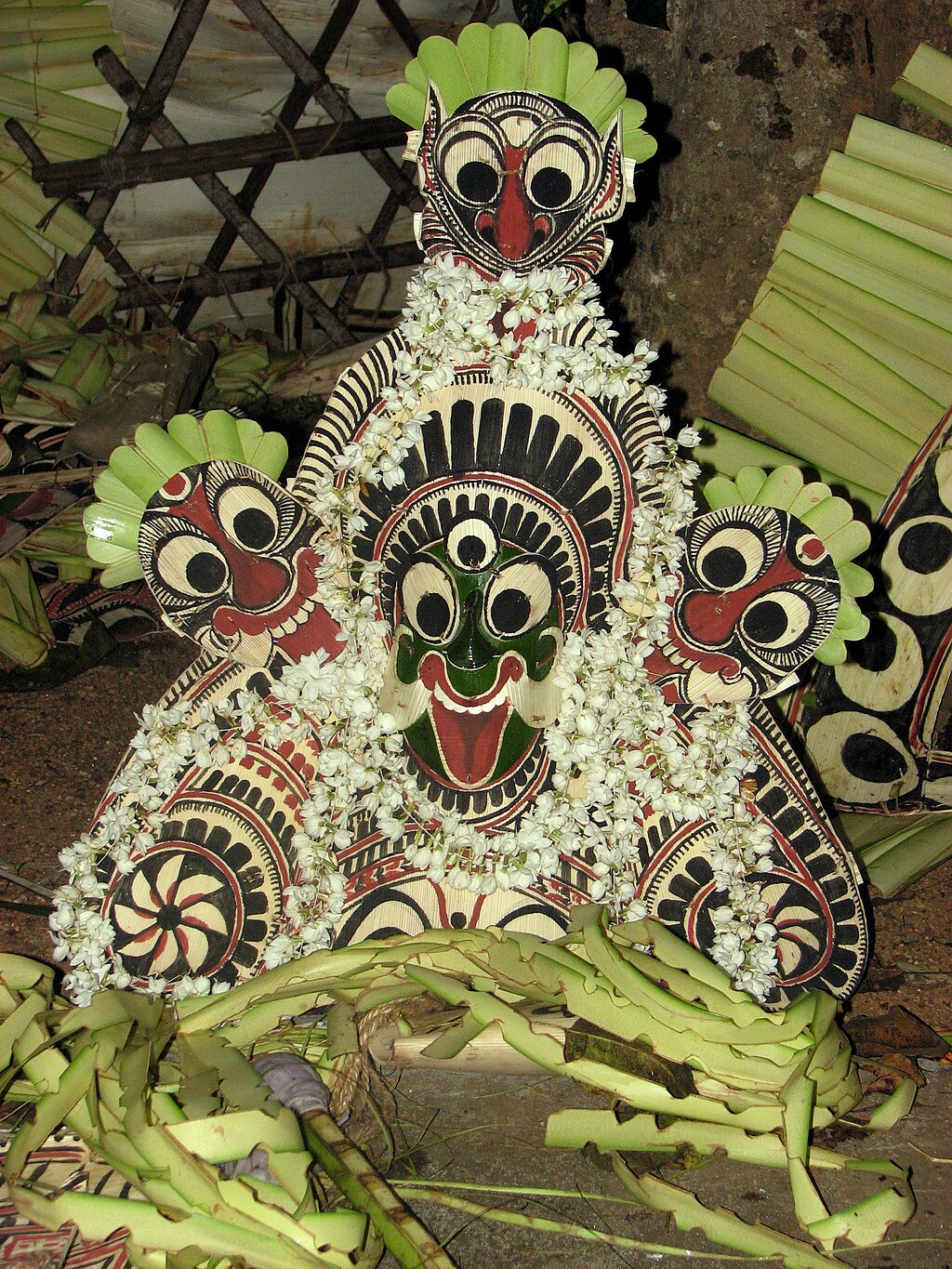
Padayani: The Ritualistic Art
Padayani is a ritual art performed in Central Kerala temples to appease Goddess Bhadrakali. Combining dance, music, and vibrant masks, it reflects the community’s collective expression of myth, fear, and fertility rituals.
Learn More
Thrissur Pooram
Known as the 'Mother of All Poorams', Thrissur Pooram is a grand temple festival held in the heart of Kerala. It showcases synchronized percussion ensembles, majestic elephant processions, and a vibrant cultural gathering that reflects communal harmony.
Learn More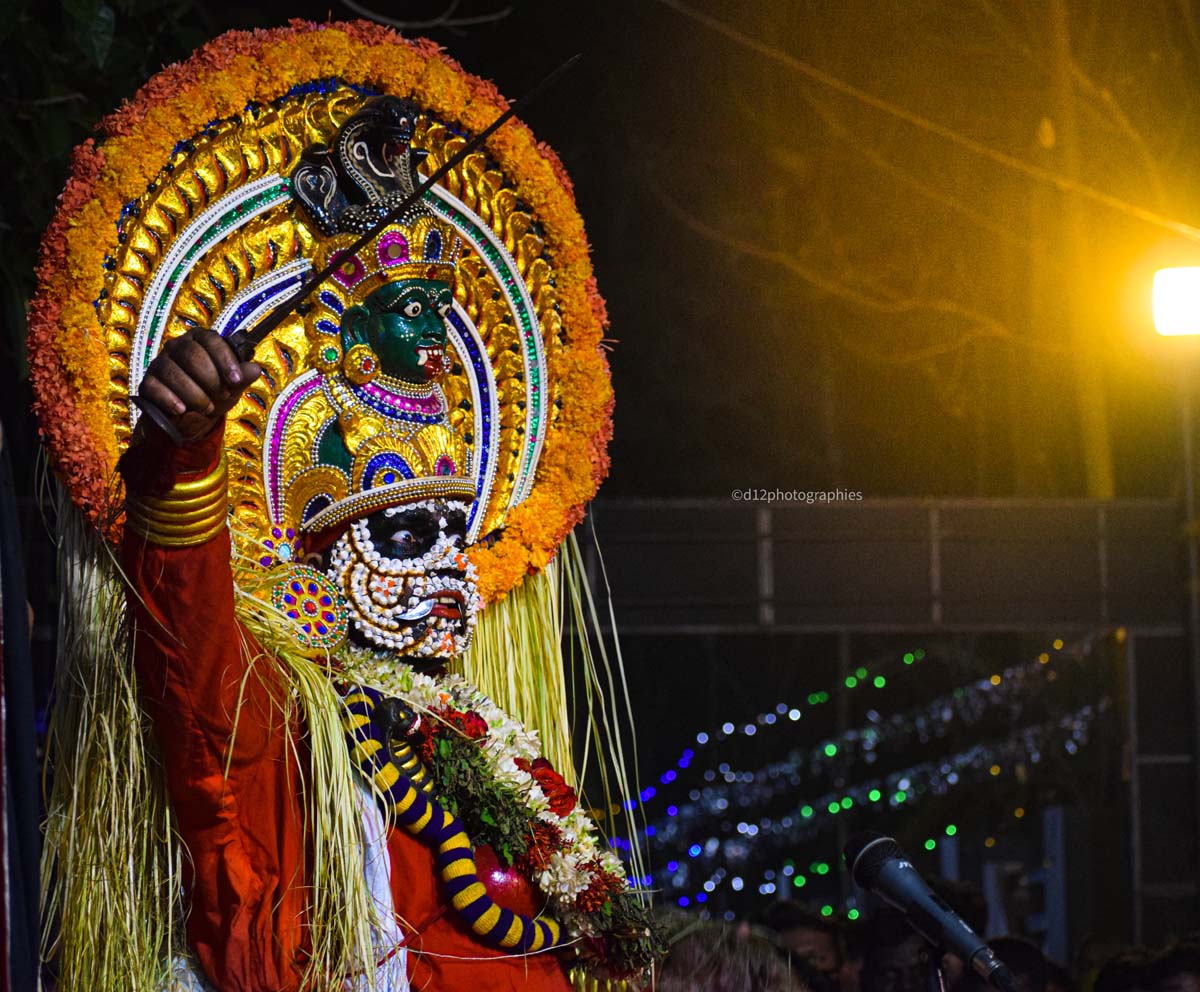
Mudiyettu: The Ritual Theatre
Mudiyettu is a vibrant ritual theatre from Kerala that reenacts the mythological battle between the goddess Bhadrakali and the demon Darika. This powerful art form is a communal ritual performed in Bhadrakali temples, celebrating the goddess's victory over evil.
Learn More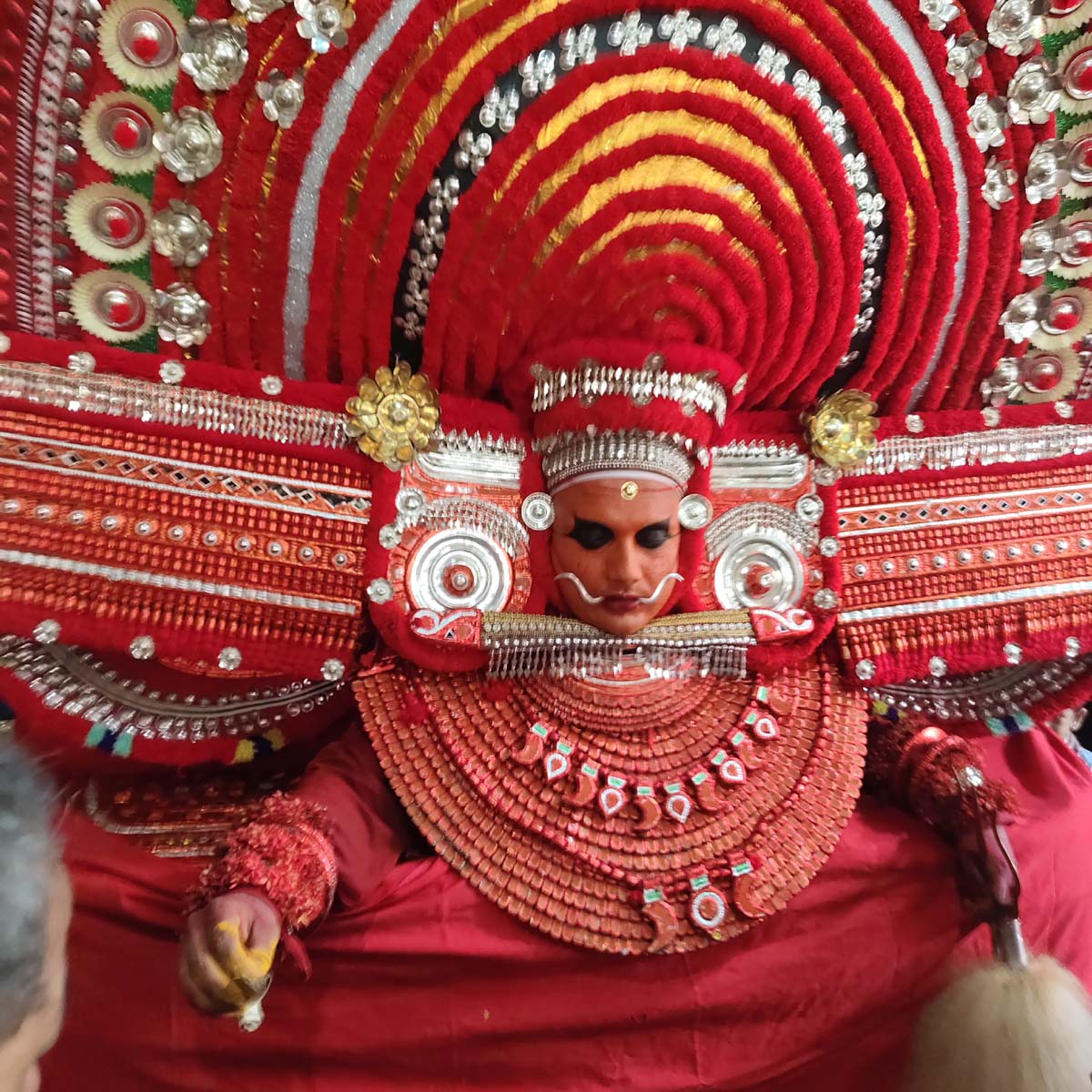
Theyyam: The Living Gods
Theyyam is a vibrant ritual art form North Kerala where the performer, adorned in elaborate makeup and costumes, embodies a deity. This sacred ritual transforms the artist into a living god, serving as a conduit for blessings and a connection to ancient myths and community deities.
Learn MoreKerala's Cultural Foundation: A Basis for Social Folklore
Kerala, often referred to as "God's Own Country," possesses a cultural heritage that is as rich and diverse as its green landscapes. Its social folklore is deeply rooted in a history shaped by millennia of interactions, both internal to India and from abroad. The region's cultural origin can be traced back to ancient Thamizhagom around the 3rd century AD, a historical area characterized by a common Tamil culture1M.G.S. Narayanan, *Perumals of Kerala: Political and Social Positions of Kerala*, Calicut University, 1996.. Over time, Kerala's culture evolved through the Sanskritization of Dravidian ethos, religious revivalism, and significant social reform movements that challenged caste discrimination2P.K. Balakrishnan, *Jathivyavasthayum Keralacharitravum*, D.C. Books, 2005..
The state's strategic location along ancient trade routes meant centuries of trade and migration, particularly the lucrative spice trade, which attracted merchants from across the globe. Early Arab traders, for instance, established settlements in Kozhikode as early as the 7th century3A. Sreedhara Menon, *A Survey of Kerala History*, Sahitya Pravarthaka Co-operative Society, 1967.. This continuous influx of diverse influences, combined with the contributions of various dynasties from the ancient Cheras to the British colonial period, has profoundly shaped Kerala's unique art, architecture, and cultural heritage. This historical openness and multicultural interaction have led to a complex cultural synthesis, fostering a particularly broad and varied social folklore that is not uniform but a layered phenomenon, absorbing and adapting elements from various sources. The result is a dynamic cultural mixture, where different groups and historical periods have contributed their distinctive traditions.
A Confluence of Cultures: Religious Harmony and Communitarian Values
One of Kerala's most distinguishing features is its remarkable religious harmony, where Hinduism, Christianity, and Islam coexist and actively influence its festivals, cuisine, and art forms. While over half the population identifies as Hindu, a significant portion comprises Muslims, particularly the Moplah (Mapilla) community, and Christians, including the ancient St. Thomas Christians4U. S. Department of State, *International Religious Freedom Report*, 2006.. This harmony extends beyond mere coexistence; it is an active intermingling reflected in shared social practices and traditions. For instance, Christian families in Kerala observe Holy Thursday with rituals involving Passover bread made from rice and coconut, and brides participate in elaborate henna ceremonies, demonstrating a seamless blend of religious observance with local customs5K. V. Joseph, *A History of the Syrian Christians of Kerala*, M.J.M. Publications, 1982.. This indicates that social folklore in Kerala often transcends strict religious boundaries, allowing for shared participation and influence, which contributes to a collective "Malayali" identity that is distinctly broader than any single religious affiliation.
Malayali culture is widely associated with strong communitarian values, a keen wit, and an appreciation for social progressivism. Furthermore, Kerala is home to various tribal communities, the primitive inhabitants of the land, who have preserved unique ways of life, distinct dialects, and customs. Their artistic expressions often reflect their secluded social structures, with rituals and customs frequently based on the worship of forest gods and goddesses, emphasizing a harmonious balance with nature6G. Sankara Pillai, *Tribal Culture of Kerala: A Study of the Social, Economic and Cultural Life*, Kerala State Planning Board, 1991..
The Role of Traditional Practices in Shaping Kerala's Identity
Kerala's traditions vividly reflect its rich history and diverse influences. The grand Onam festival, for example, celebrates prosperity with the elaborate Onasadya feast and thrilling snake Boat Races , while Theyyam, a unique ritualistic dance, embodies a blend of dance and spirituality. The local Malayalam language enriches these cultural practices, and traditional handicrafts, along with distinctive architectural styles like ancient temples and Nalukettu homes, further underscore the state's artistic heritage and cultural identity. Regional folklore plays a crucial role in showcasing India's broader cultural diversity, conveying moral lessons, historical events, and local traditions unique to various communities. In Kerala, tales often highlight themes of nature and spirituality, reflecting the lush landscapes that define the region.
The Social Fabric of Kerala’s Folklore
In the context of Kerala, social folklore encompasses the traditional actions and shared practices that form the very structure of community life. These are the dynamic interactions and collective expressions that bind people together, shaping their daily routines, celebrations, and life's significant milestones.
Community Rituals and Festive Celebrations: Bringing People Together
Kerala is renowned for its active and diverse calendar of festivals, which are central to its social folklore. These include major cultural celebrations like Onam and Vishu, alongside significant religious festivals such as Attukal Pongala, Kodungallur Bharani, and Kottiyur Vaishakha Maholsavam. These celebrations are indispensable for bringing communities together, preserving ancient customs, and maintaining traditional art forms. Many festivals are deeply rooted in religious worship and involve elaborate rituals and performances, such as the Theyyam festivals, which take place annually from November to May in northern Kerala.
Performing Arts: Embodied Narratives of Tradition

Diverse forms of folk performing arts are intrinsically linked to these community festivals and gatherings, serving as embodied narratives of tradition:
- Theyyam: An ancient ritualistic art form prevalent in northern Kerala, where performers transform into deities, ancestors, and spirits, bridging the earthly and divine realms7M.G.S. Narayanan, *Perumals of Kerala: Political and Social Positions of Kerala*, Calicut University, 1996.. This expressive tradition involves elaborate makeup, striking costumes, dance, music, and chanting, traditionally performed by male members of specific communities. It is deeply rooted in the region once known as Kolathunadu.
- Padayani: A traditional folk art from southern Kerala, usually performed during the Onam festival. It involves elaborate processions, the use of masks crafted from wood, bamboo, or clay, and costumes, with performers dancing to the beats of traditional percussion instruments like chenda and thakil. Themes often revolve around mythological stories or social issues.
- Thirayattam: A ritualistic performance frequently staged in the courtyards of temples dedicated to goddesses like Kali, Durga, and Bhadrakali. It features elaborate costumes and makeup, with performers dancing to traditional percussion.
- Poothanum Thirayum: A ritual art form performed in Bhagavathi temples of central and northern Kerala, particularly in Palakkad, Malappuram, and Thrissur. It symbolizes the victory of divine forces over evil, with performers embodying Poothan (divine attendants of Lord Shiva) and Thira (Goddess Kali).
- Mudiyettu: A ritual dance presented in Kali temples, especially in Ernakulam and Kottayam, celebrating the goddess's victory over the demon Daarikan8G.S.S. “Mudiyettu.” *The Hindu*. February 16, 2018..
- Mudiyattam: An ancient folk dance performed by women, characterized by graceful movements and the rhythmic swinging of their long, loose hair (mudi). It is often associated with Bhadrakali temples as a form of devotional expression. Koodiyattam represents the classical theatre heritage of Kerala, blending Sanskrit drama with temple rituals and intricate acting traditions. Recognized by UNESCO, it stands as a living example of Kerala’s deep-rooted performative and cultural legacy.
- Kummattikkali is a lively folk performance from central Kerala, known for its colourful wooden masks, playful dance movements, and door-to-door festive interactions during Onam. Blending ritual, humour, and communal participation, it reflects the social imagination and neighbourhood bonding at the heart of Kerala’s folk culture.
- Kanyarkali is a dynamic folk dance tradition of Palakkad, celebrated for its martial origins, rhythmic footwork, and dramatic group formations performed during the Vishu season. Combining ritual devotion to Bhagavathy with echoes of ancient combat training, it showcases the community’s agility, discipline, and cultural memory, making it one of Kerala’s most distinctive social folklore traditions.
- Other significant forms include Chakyar koothu (ancient ritual storytelling), Arjuna Nritham (dance of arjuna the warrior)), Kannyar Kali (martial folk art),
- margamkali (now primarily a stage performance by women), Kavadiyattam (dance of devotion), and Theeyattu (fire rituals).
These performances are living narratives that preserve ancient stories, historical events, and communal values, serving as dynamic cultural commentaries. Many of Kerala's social folklore forms, particularly ritualistic performing arts like Theyyam, serve as living narratives that embody historical events, social values, and even challenges to existing power structures. For example, many Theyyam myths are considered sources that portray the oppression faced by lower castes during the 12th century, and the deities personified in a majority of Theyyams are, in reality, victims of caste oppression9Mini, Darshana Sreedhar. “Theyyam as a Medium of Resistance.” *Journal of the Anthropological Survey of India*, 2018.. This reveals that these performances are deeply embedded cultural commentaries and historical archives, reflecting societal struggles, aspirations for justice, and the collective memory of a community's past. They demonstrate how social folklore can be a powerful medium for cultural expression, historical preservation, and even subtle social critique or catharsis.
The regional variations in social folklore within Kerala, such as the prominence of Theyyam in northern Kerala versus Padayani in southern Kerala, are not arbitrary. These distinctions reflect localized historical developments, specific social structures, and even nuanced linguistic differences. For instance, Theyyam's origins are deeply tied to Kolathunadu in northern Kerala and its historical shaping by the Kolathiri dynasty. Similarly, the Malabar region, including Kozhikode, has unique dialectal expressions and folk arts like Mappillapattu. This indicates that while a broad "Kerala folklore" exists, specific expressions are profoundly tied to sub-regional identities, underscoring how local contexts shape broader cultural phenomena.
Social Customs and Life Cycle Ceremonies: Marking Life's Journey
Social folklore also manifests in the customs and rituals associated with significant life cycle events. These include traditional practices surrounding weddings, such as the groom tying the thali (a sacred necklace) and elaborate henna ceremonies for the bride, which symbolize blessings and prosperity. Religious ceremonies, as well as beliefs and taboos related to birth and death, also carry distinct customary elements that are passed down through generations. For instance, Christian families in Kerala observe unique traditions like preparing Passover bread on Holy Thursday and specific funeral liturgies.
Traditional Games and Pastimes: Play as a Reflection of Culture
Traditional Games form another integral part of Kerala's social folklore, providing entertainment and strengthening community bonds. Examples include Kuttiyum Kolum, Pallankuzhi, Kallanum Polisum, and Kotham Kallu. These Games often preserve historical experiences and local traditions, offering a playful yet meaningful connection to the past.
Indigenous Knowledge Systems: Healing and Community Well-being
Traditional healing practices are deeply rooted in Kerala's culture and also fall under the umbrella of social folklore. Ayurveda and various forms of Folk Medicines, including ethnomedicine and marma therapy, are knowledge systems passed down through generations of traditional healers. Tribal communities, in particular, possess unique customs, practices, and agricultural methods, such as shifting cultivation, that reflect their profound connection to the forest and their traditional economy based on forest products. Their songs and folktales often express a deep vision for environmental preservation and a harmonious relationship with nature.
The Dynamic Nature of Kerala's Social Folklore
Social folklore, by its very nature, is not a static relic but a living, evolving entity. It constantly adapts to contemporary social changes and external influences. This adaptability is especially evident in Kerala, where traditions have withstood centuries of transformation. Globalization presents a dual impact: while it can erode traditional practices through cultural uniformity, it also offers promising pathways for documentation and revitalization through digital platforms. The Kerala Folklore Museum, established in 2009, exemplifies this commitment by preserving threatened folk traditions and showcasing performances, artifacts, and instruments.
Folklore as a Mirror: Reflecting Social Structures and Historical Change
Kerala’s social folklore, particularly ritualistic forms like Theyyam, reflects the region's layered social systems and history. 's is primarily performed by members of historically marginalized communities. During the performance, the artist embodies a deity, temporarily reversing caste hierarchies and receiving reverence from all10Jenett, Dianne. *A Million Shaktis Rising: Pongala, a Women's Festival in Kerala, India*. 2005.. Many Theyyam myths depict the struggles of oppressed castes, with the deities represented often being actual victims of social injustice. For instance, Pottan 's challenges the very logic of caste and critiques its existence.
Historically, 's evolved under various social forces. The arrival of Brahmins in the 12th century redefined social norms, which influenced the ritual. Colonial administrators and Christian missionaries condemned 's, branding it as primitive. Later, reformers like Sree Narayana Guru influenced its transformation by challenging certain ritual elements. The inclusion of Kolams in protests and public performances gave 's a new theatrical dimension but arguably reduced its ritual significance. These influences highlight that folklore in Kerala has been both a site of resistance and of ideological negotiation.
In post-independence Kerala, despite lingering colonial perceptions and changing educational attitudes, 's has emerged as a respected art form taught in academic settings and showcased in national events.
Preservation and Modernity: Navigating the Digital Age
The digital era provides unprecedented opportunities to archive and disseminate folklore. Yet, with greater visibility comes the risk of losing original meaning as performances are modified for wider audiences. In recent years, Theyyam has received increased attention and funding from both public and private sectors, helping promote tourism and institutional training. This shift positions folklore not as a hurdle to progress, but as a resource for development. However, the ongoing tension between preserving authenticity and enabling adaptation remains a core challenge for modern folklore custodians in Kerala.
The Enduring Spirit of Kerala's Social Folklore
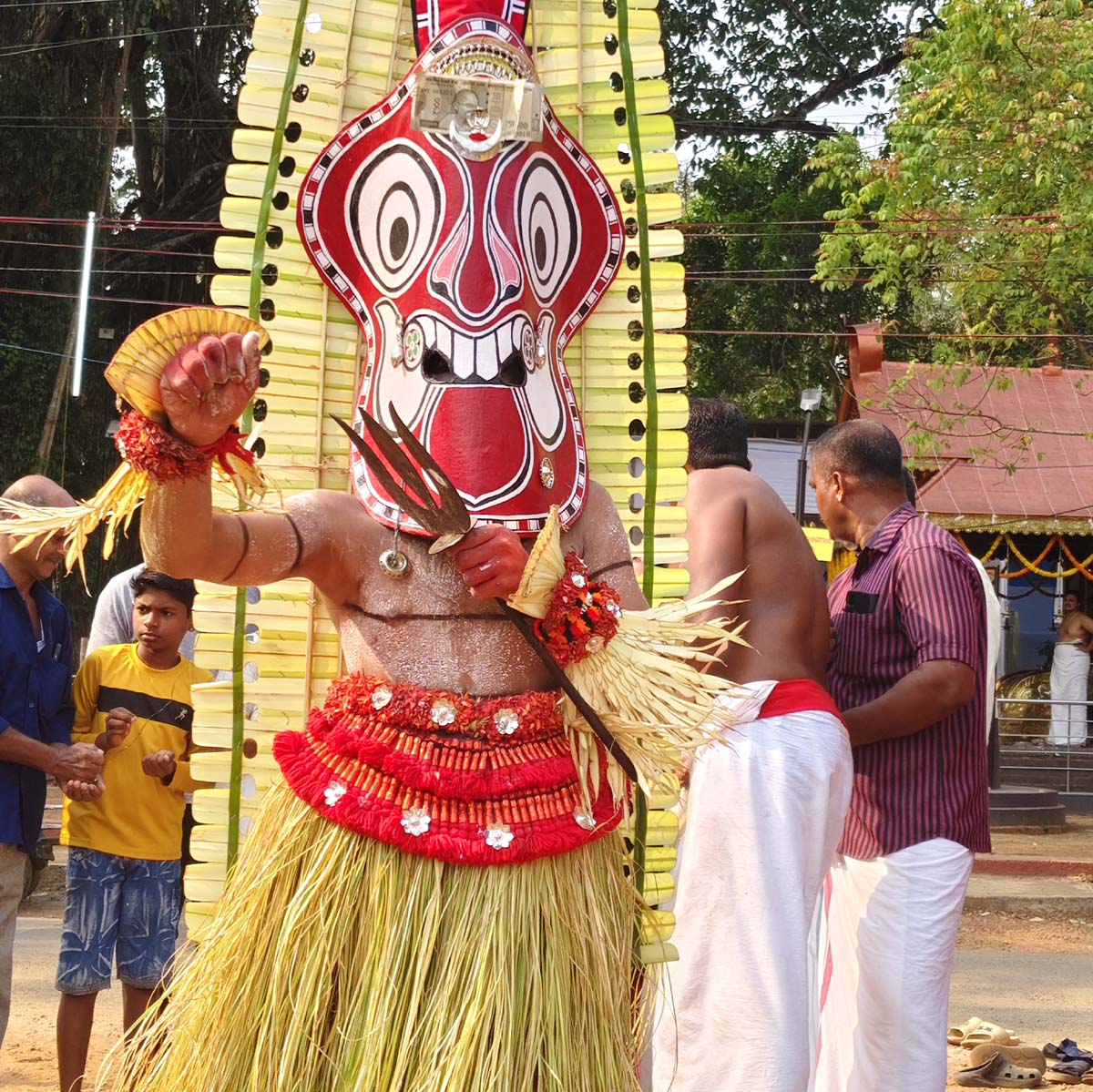
Kerala’s social folklore is not merely a collection of old traditions but a dynamic, enduring heritage deeply woven into everyday life and belief systems. It encompasses a rich variety of expressions — from ancient rituals and compelling performance arts to communal customs and traditional Games.
These traditions offer insights into Kerala's complex societal landscape, including caste hierarchies and the impacts of colonization and reform. More importantly, they help shape shared values and community resilience. Kerala’s folklore continues to grow and transform, maintaining its cultural essence while embracing change. This resilience ensures that the cultural heartbeat of Kerala thrives across generations. We invite you to explore the specific traditions and stories preserved on this website, each carrying the soul of Kerala’s living heritage.
Further Reading & References
- Books
- Narayanan, M.G.S. Perumals of Kerala: Political and Social Positions of Kerala, Calicut University, 1996.
- Balakrishnan, P.K. Jathivyavasthayum Keralacharitravum, D.C. Books, 2005.
- Menon, A. Sreedhara. A Survey of Kerala History, Sahitya Pravarthaka Co-operative Society, 1967.
- Joseph, K.V. A History of the Syrian Christians of Kerala, M.J.M. Publications, 1982.
- Pillai, G. Sankara. Tribal Culture of Kerala: A Study of the Social, Economic and Cultural Life, Kerala State Planning Board, 1991.
- Jenett, Dianne. A Million Shaktis Rising: Pongala, a Women's Festival in Kerala, India, 2005.
- Mini, Darshana Sreedhar. “Theyyam as a Medium of Resistance.” Journal of the Anthropological Survey of India, 2018.
- Websites
- Attukal Bhagavathy Temple. “Pongala Mahotsavam.” Official Website of Attukal Bhagavathy Temple. Available at attukal.org
- The Official Website of Kodungallur Sree Kurumba Bhagavathy Temple. “Kodungallur Bharani Festival.” Available at kodungallursreekurumbabhagavathytemple.org
- Kottiyoor Devaswom. “Kottiyoor Vaishakha Maholsavam.” Official Website of Kottiyoor Devaswom. Available at kottiyoordevaswom.com
- G.S.S. “Mudiyettu.” The Hindu, February 16, 2018. Available at thehindu.com
- U.S. Department of State. International Religious Freedom Report, 2006. Available at state.gov